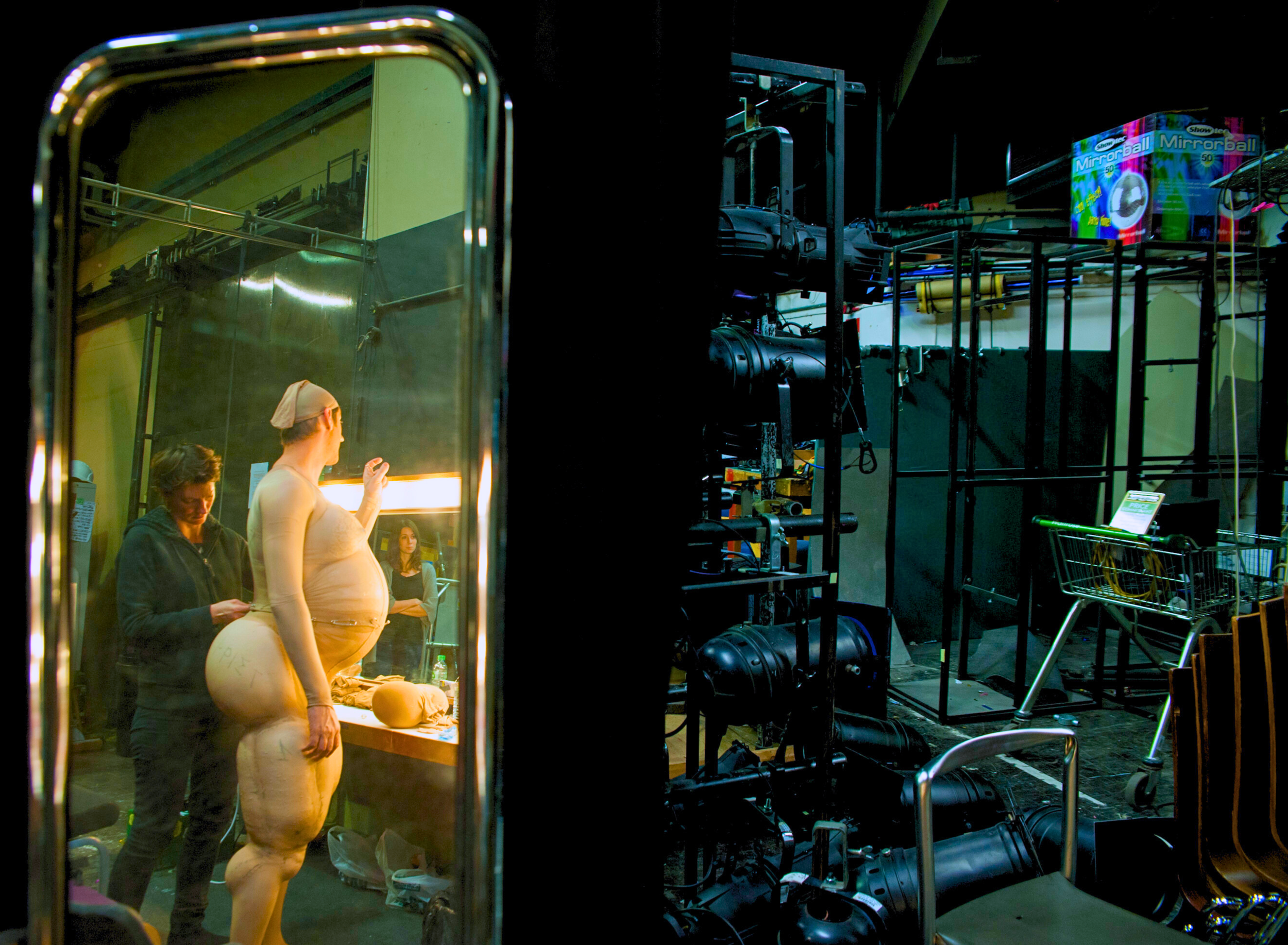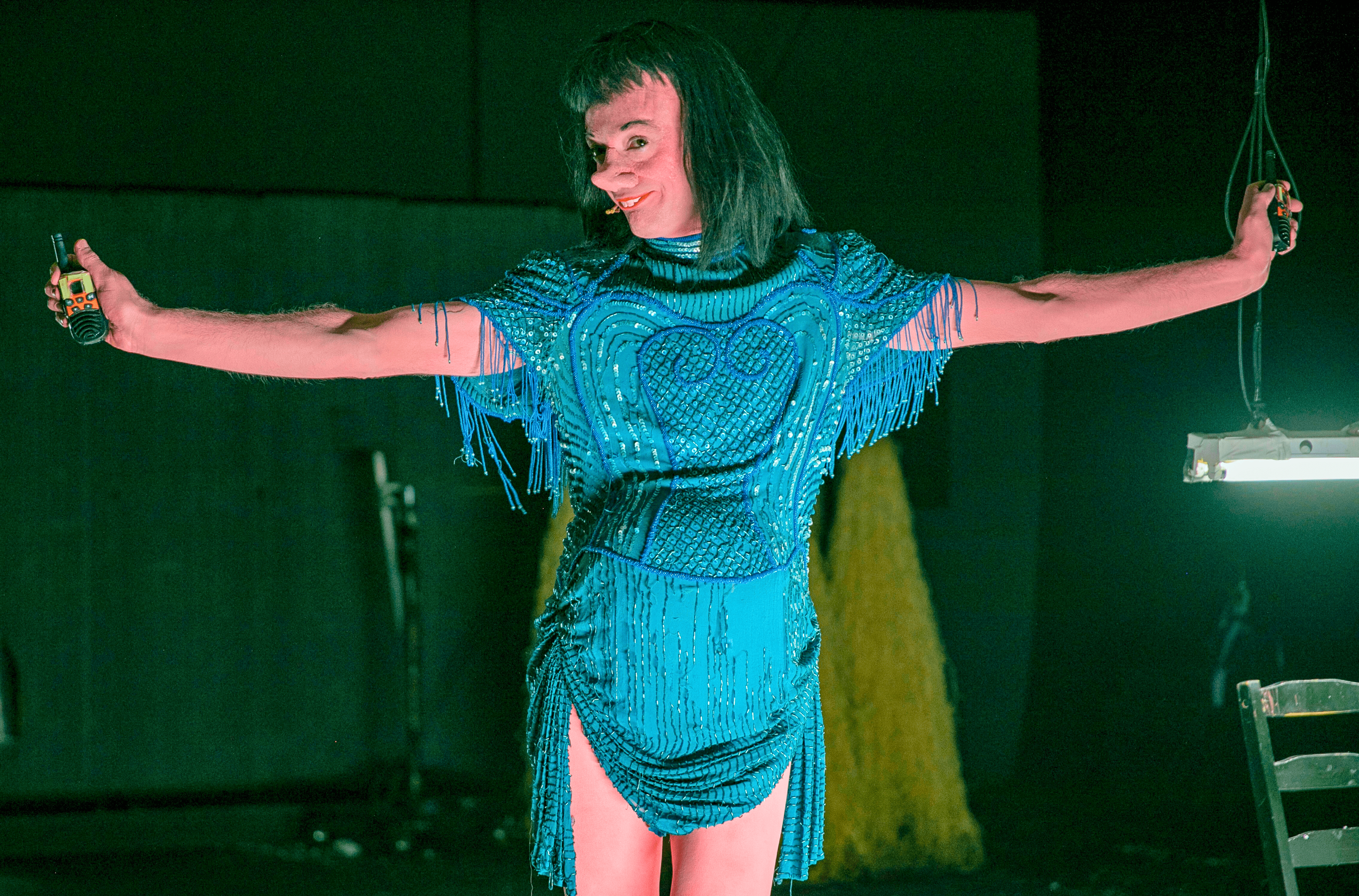Giorgos Sampatakakis stands out in contemporary Greek theatre studies for his lucid thinking and consistent engagement with the radical and the poetic. A respected scholar and critic in performance studies, he has explored the complexity of theatre through his work on queer theory, the reception of ancient drama, and contemporary stage practices. His writing challenges the very foundations of theatre, revealing its potential as a space for resistance, transformation, and new beginnings.
In this particular piece, Sampatakakis looks at the work of Euripides Laskaridis, examining how Laskaridis' bold performances break down traditional ideas about gender, identity, and form. This analysis, first published in Scene, the academic journal of the Department of Theatre at the Faculty of Fine Arts, Aristotle University of Thessaloniki, takes us deep into Laskaridis' artistic world—where vulnerability meets strength, the grotesque becomes beautiful, and the stage is used to explore new ways of understanding the self.
For those intrigued by the intersection of queer theory, performance art, and contemporary theatre, Sampatakakis' analysis offers a compelling entry point into this poetic and unsettling world of Euripides Laskaridis.
A Queer Technology of Performance
Sampatakakis suggests that Laskaridis' art incorporates a distinct "queer technology"—a performative approach shaped by drag, grotesque aesthetics, and the subversion of conventional gender and bodily expectations. Drawing on theorists such as Judith Butler (Gender Trouble), Renate Lorenz (Queer Art: A Freak Theory), and José Esteban Muñoz (Disidentifications), Sampatakakis situates Laskaridis within a broader queer artistic framework that challenges traditional notions of authenticity, coherence, and categorization.
The Triptych: RELIC, TITANS and ELENIT
Sampatakakis frames Laskaridis’ trilogy — RELIC (2015), TITANS (2017) and ELENIT (2019)—as a queer triptych that explores human vulnerability, resilience, and social alienation.
RELIC // Portrays a ruin-like figure that embodies loneliness and precarity, blending the tragic and the absurd. The work uses bodily distortions and irony to transform the body into a site of personal and social struggle, navigating a space of contradiction. This approach draws on ideas of gender performativity, creating a space where the figure’s body becomes a site of conflict and negotiation.
TITANS // Through grotesque and often comical, surreal imagery, this work explores the textures of resistance and transformation within a world shaped by rejection, longing, and absurd rituals. Suspended between collapse and rebirth, it reflects on fragile desires, failed intimacies, and the persistent tension between visibility and erasure. Challenging normative ideals of love and identity, this piece offers a reflection on what resists definition—on what remains fragile, exposed, and in motion.
ELENIT // Thrusts us into a dystopian landscape populated by hybrid beings engaged in chaotic yet deeply symbolic encounters. A 21st-century Marie Antoinette meets a mustachioed woman in a ruined kitchen, while a dinosaur struts on high heels. This carnivalesque collision of identities and aesthetics critiques the constructs of human categorization, evoking elements of drag performance, camp, and avant-garde site-specific theatre.
Aesthetic and Political Subversion
In his article Sampatakakis highlights how Euripides’ performances are not artistic experiments; they are deeply political acts of defiance, how his work reclaims and distorts the theatricality of gender to create alternative bodily forms. His performances refuse categorization, embracing what Oskar Schlemmer termed Kunstfigur—a sculptural, otherworldly human form that defies convention.
The use of irony, surreal humor, and grotesque embodiment in Euripides’ work also aligns with Michael Warner’s Publics and Counterpublics, which argues that queer performance generates new forms of social engagement by disrupting normative scripts. Sampatakakis links this subversion to a broader tradition of queer adaptation, where cultural symbols are reclaimed, distorted, and repurposed to challenge hegemonic narratives.
Conclusion: A Theatre of Radical Possibility
Sampatakakis' study positions Euripides as a visionary in contemporary theatre—an artist whose work transcends entertainment to engage with existential and political crises. By destabilizing gender, identity, and theatrical form, Laskaridis crafts performances that are at once deeply personal and radically transformative.
Full analysis is available online - click here to check it out.








